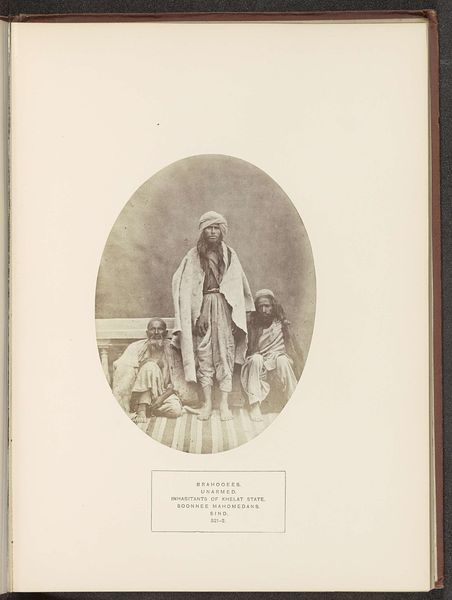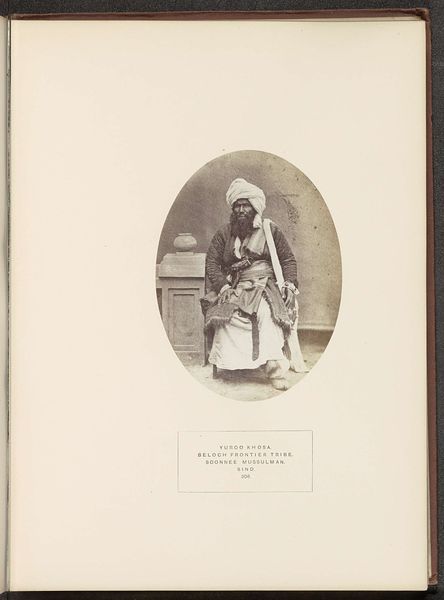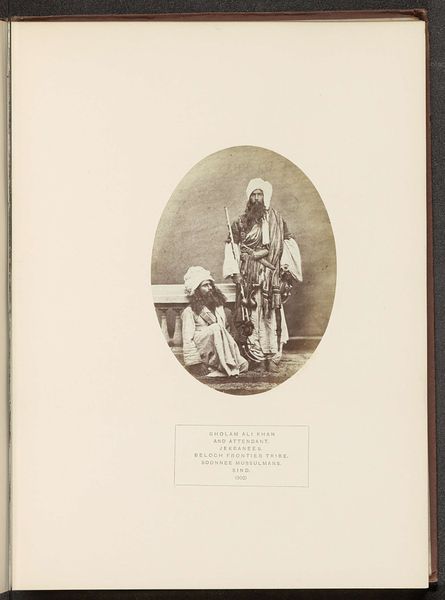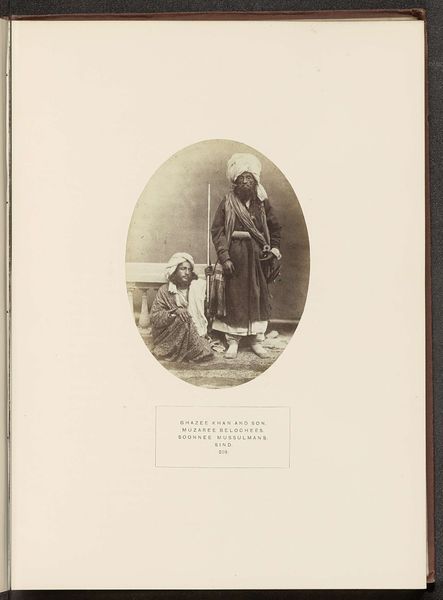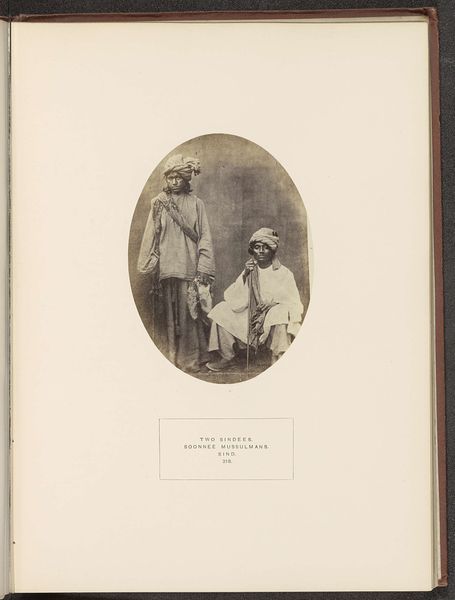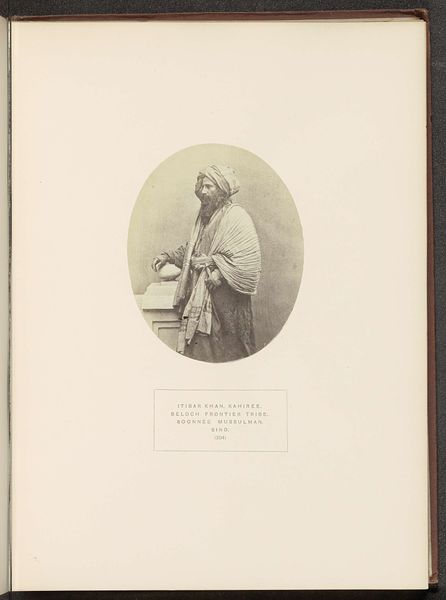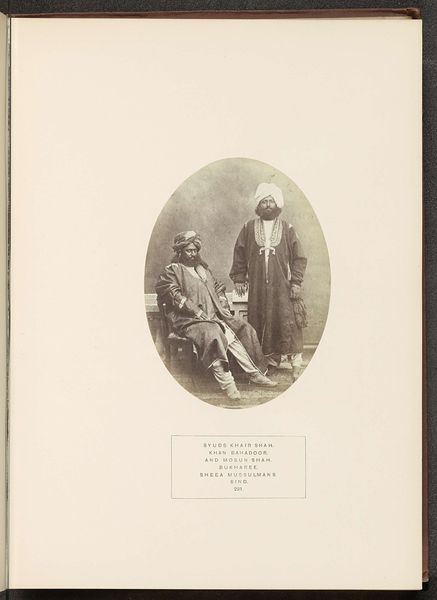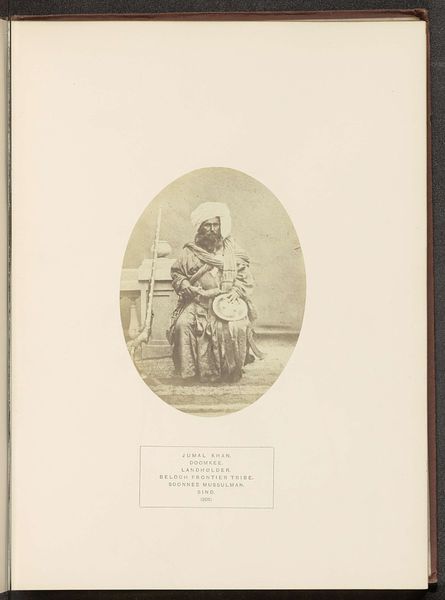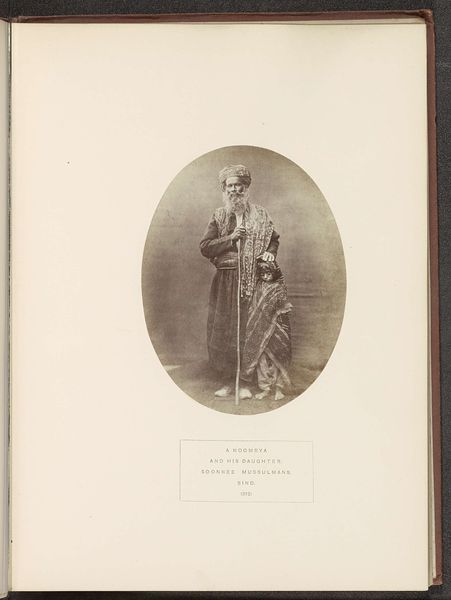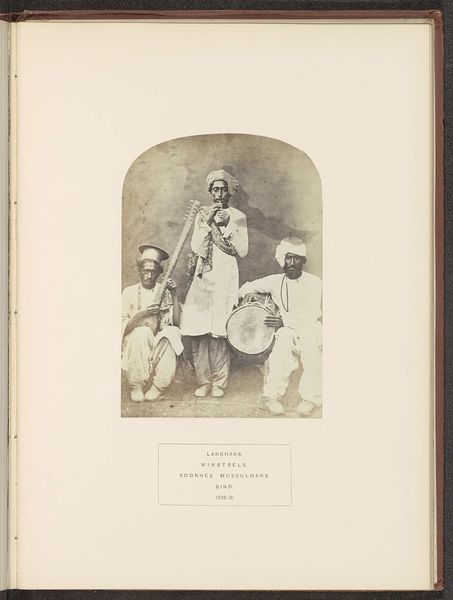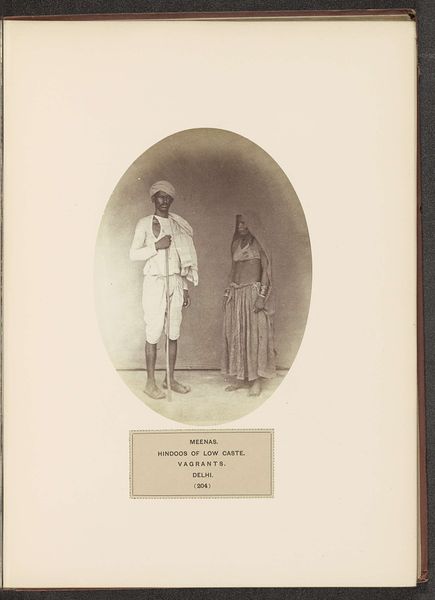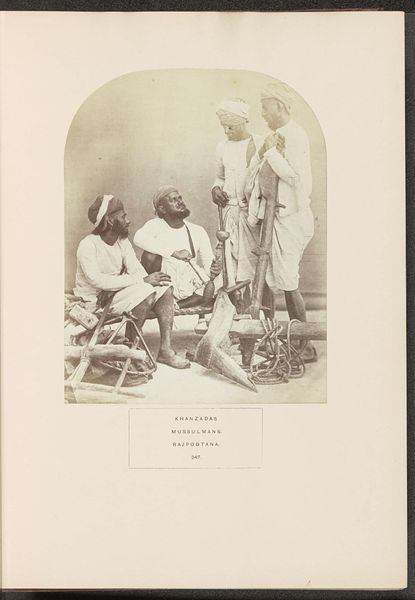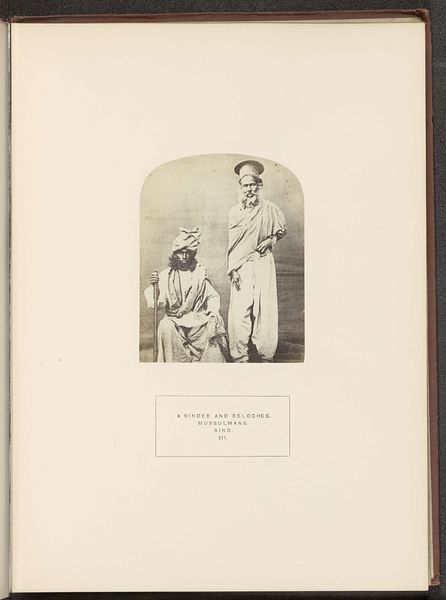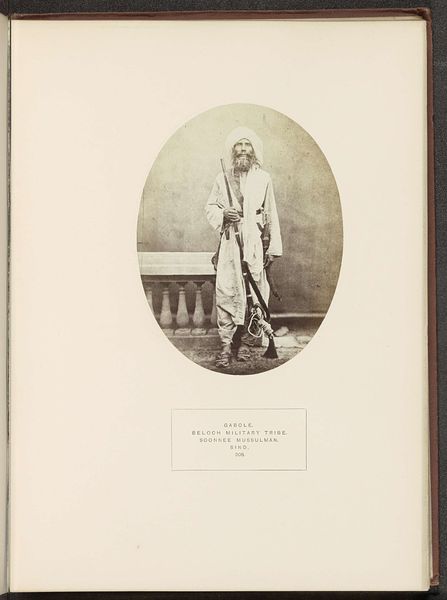
Portret van Khair Mahomed, het hoofd van een Baloch-stam, en een bediende before 1872
0:00
0:00
photography
#
portrait
#
16_19th-century
#
photography
#
orientalism
Dimensions: height 158 mm, width 120 mm
Copyright: Rijks Museum: Open Domain
This photographic print by Henry Charles Baskerville Tanner captures Khair Mahomed, a Baloch tribal chief, with an attendant. Photography in the 19th century was a complex blend of science and craft, involving the careful manipulation of chemicals and light-sensitive materials. The albumen print process used here was particularly labor-intensive, requiring a coating of albumen—egg white—on paper to create a smooth surface for the photographic emulsion. This technique, while capable of producing fine detail, was also time-consuming and relied heavily on skilled labor. The social context of this portrait is crucial. Tanner, as a photographer working within the British colonial context, was involved in the visual representation of indigenous peoples. Photography became a tool of documentation and control. The very act of photographing Khair Mahomed reflects a power dynamic inherent in colonial encounters. Thinking about the materials, process, and social context allows us to understand the complex layers of meaning embedded in this seemingly straightforward portrait.
Comments
No comments
Be the first to comment and join the conversation on the ultimate creative platform.
